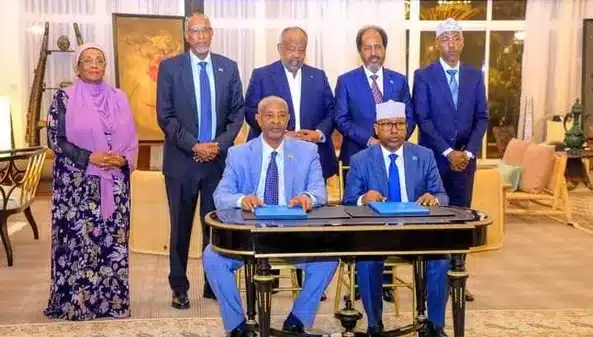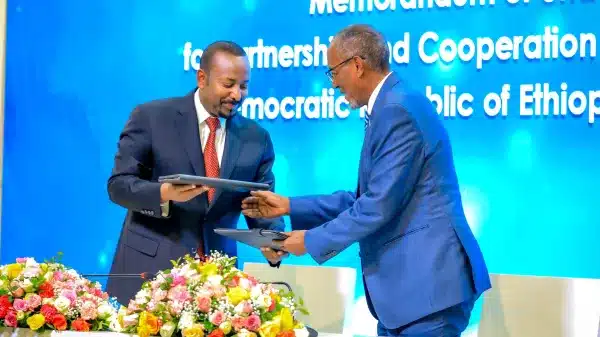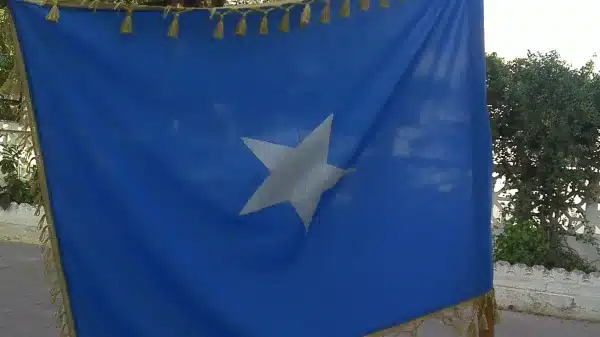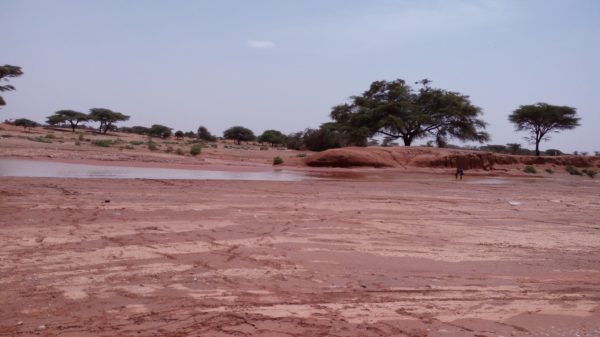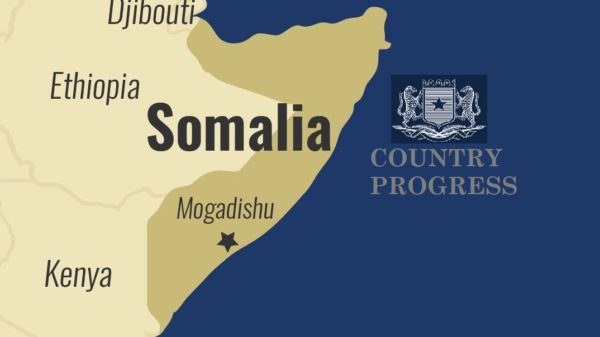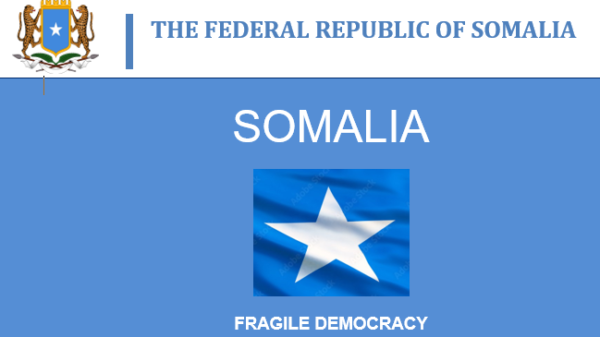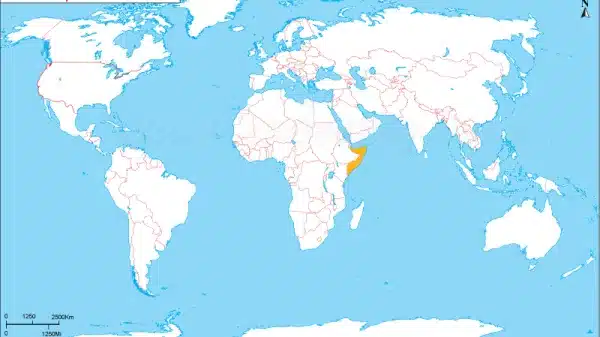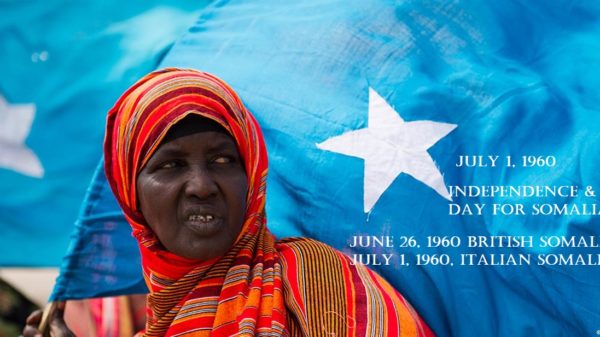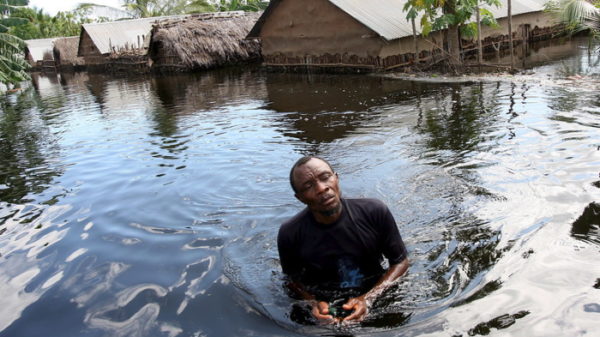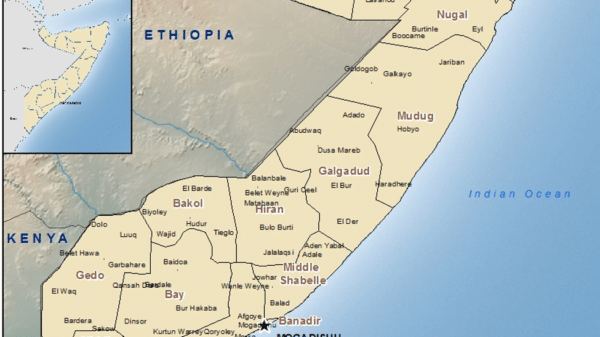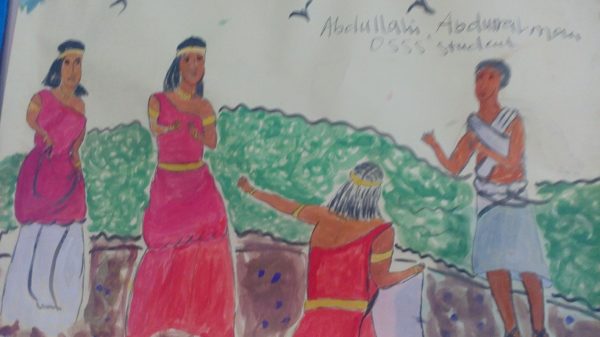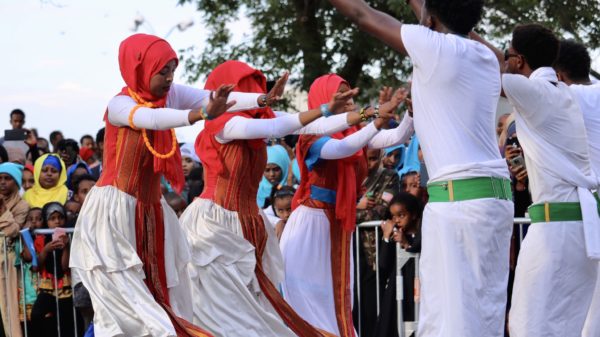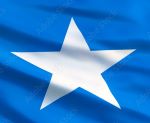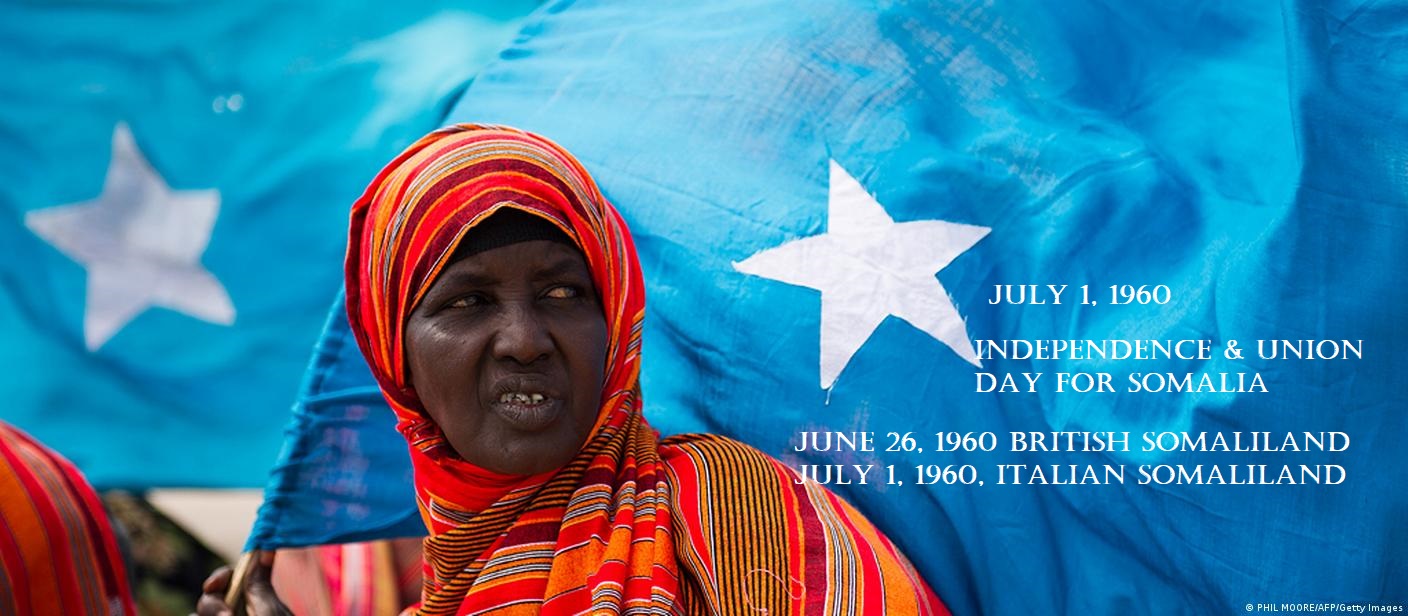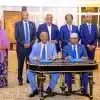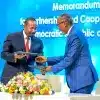Independence and Functioning State of Somalia
The Birth and Growth of the Somali Nation: A Journey Towards Progress, Democracy, and Military Power (July 1960 – April 1991)
Somali’s independence was achieved in July 1960, thanks to the relentless efforts of the freedom fighters. The youth movement played a crucial role in bringing together the Somali ethnic people politically. Southern Somalia, known as Italian Somaliland, gained a ten-year United Nations Italian trusteeship starting from April 1, 1950, until July 1, 1960. Additionally, North Somalia, known as British Somaliland, declared its independence on June 26, 1960, without objection from the British protectorate administration.
On July 1, 1960, the Republic of Somalia was born, marking the union of South and North Somalia as an independent nation. The country operated as a parliamentary democracy, with the ruling political party being SYL and its inaugural leader, President Aden Abdulle Osmaan. However, in early 1967, President Osman lost a democratic election to Abdirashid Ali Sharmake, who was sworn into office on July 6, 1967. This democratic period lasted until October 21, 1969.
A bloodless coup took place on October 21, 1969, following the assassination of President Abdirashid Ali Sharmarke on October 15, 1969. General Mohamed SIAD Barre assumed control of the country, becoming the third president of Somalia and establishing an authoritarian progressive socialist system that lasted for 22 years.
Post-independence, significant progress was witnessed in various aspects, including democracy and military strength. To provide a comprehensive understanding of Somalia’s journey during this era, reliable sources are utilized to highlight the positive developments. The merger of Southern and North Somalia led to the birth of the united Republic of Somalia, a significant milestone in the nation’s history. Somalia, functioning as a parliamentary democracy, experienced a period of advancement and relative growth. The country demonstrated a peaceful transition of power, holding democratic elections and prioritizing the well-being and unity of the Somali people.
During the early years of democracy in Somalia, the SYL regime implemented a system that embraced multi-party politics and ensured the freedom of expression. The political sphere was marked by the coexistence of diverse political parties such as the Somali National Congress and the Somali Democratic Union, in addition to the ruling SYL. Regular elections were conducted, with the active participation of various political organizations. Nevertheless, the monopolization of power by the SYL was a distinctive feature of this era.
On October 21, 1969, the bloodless coup led to the military assuming control and General Mohamed SIAD Barre emerging as the third President, guiding Somalia towards a progressive socialist system of governance. Despite centralizing power, President SIAD Barre’s regime experienced a notable growth in the military, police, and intelligence forces, bolstering national security and positioning Somalia as a positive influence in the region.
President SIAD Barre’s regime presided over a period of great progress during the first half of his administration, despite his centralization of power. The Somali Revolutionary Socialist Party had numerous success stories in Somalia. For instance, Barre successfully introduced the formal Somali language script and called for the elimination of tribalism. Moreover, he implemented a modern and free education system, promoted the development of the cooperative production sector, and established formidable military, police, and intelligence forces. Additionally, he pursued Somali unity aspirations, following in the footsteps of Pan-Somalism leaders such as Ahmed Gurey, Sayyid Mohamed, and the founders of SYL. In 1977, Barre engaged in a war with Ethiopia and supported the freedom movements of Djibouti, a former French colony that gained independence on 27 June 1977. These actions, however, made him unpopular among global powers, including former colonial powers, and earned him enemies in the region.
President SIAD Barre’s administration is renowned for its numerous achievements that greatly impacted Somalia’s progress and international standing. Embracing both Pan-Somalism and Pan-Africanism, President Barre championed Somali unity and mobilized the nation to assert its territorial rights. In 1977, Somalia demonstrated its military strength and resilience in a conflict with Ethiopia, showcasing its capabilities in the face of external challenges. Furthermore, President Barre actively supported and advocated for the independence of Djibouti, a former French colony, successfully achieving their freedom on June 27, 1977.
This era also witnessed significant advancements, including the formalization of the Somali language script. Recognizing its importance in preserving cultural identity and promoting effective communication, President Barre ensured the widespread adoption of the Somali language in education, administration, and literature. The eradication of tribalism and the establishment of a modern and accessible education system were additional priorities, providing the youth with greater opportunities for growth and prosperity.
Under military rule, General Mohamed Siad Barre assumed power after a bloodless coup in October 1969 and established an authoritarian regime, which lasted until 1991. Despite the authoritarian nature of his rule, Barre’s initial years in power were characterized by substantial progress. Focusing on infrastructure and rural development, Barre initiated various programs and invested heavily in road construction, agricultural projects, and healthcare facilities. The implementation of land reforms aimed to distribute land to farmers, boost agricultural productivity, and enhance food security. Furthermore, the standardization of the Somali language with the adoption of a writing script in Latin characters facilitated its widespread use in education, administration, and literature. Barre’s regime implemented policies to combat tribalism and promote a sense of national identity among the Somali people. However, it is important to note that the military rule faced challenges, including growing opposition from various sectors of society. Economic mismanagement, political repression, and human rights abuses eventually led to widespread discontent and the eventual collapse of the regime in 1991.
During the time period from July 1960 to April 1991, Somalia went through a phase of advancement, democratic governance, and military dominance. The leadership of Presidents Osmaan and Sharmake played a crucial role in laying the groundwork for the country’s development across multiple domains. Subsequently, President SIAD Barre’s regime further bolstered Somalia’s military capabilities, solidifying its position on the regional stage. Despite encountering opposition and criticism from colonial powers, Somalia achieved significant milestones that testify to its resilience and its aspirations for a prosperous future.
To summarize, the years spanning from July 1, 1960, to April 1991 marked a period of dual governance in Somalia, characterized by both democracy and military rule. While the early democratic governance witnessed progress and a drive for national unity, the subsequent military regime brought about notable transformations and advancements, albeit accompanied by increasing geopolitical complexities and internal opposition. This era, from July 1, 1960, to April 1991, holds great historical significance for Somalia, encompassing its emergence as an independent nation, its initial experiences with democracy, and subsequent transition into military rule. Throughout this time, Somalia witnessed progress as well as challenges across various facets of its governance and society.
Feedback
Dear reader your feedback is very important to and will help us improve our work, so please leave a comment. Thank you
Author
-
Strategic Communication Specialist and Consultant, graduated from The Ohio State University with Strategic Communication major and Journalism. Follows the social and political changes of the wider East Africa region, with keen interest of the Somali news and issues, with over 12 years media and communication experience in the region.
View all posts





